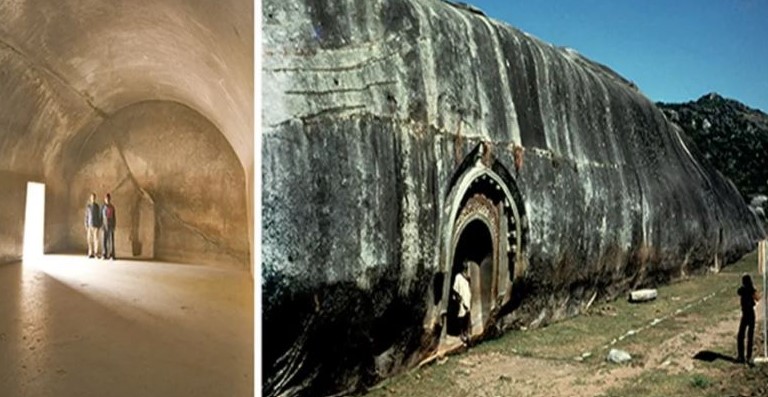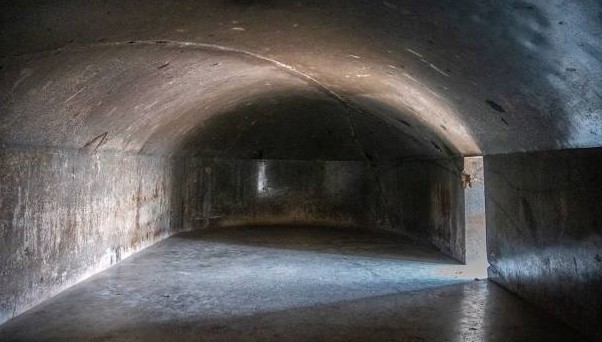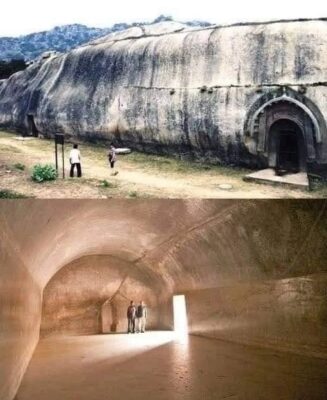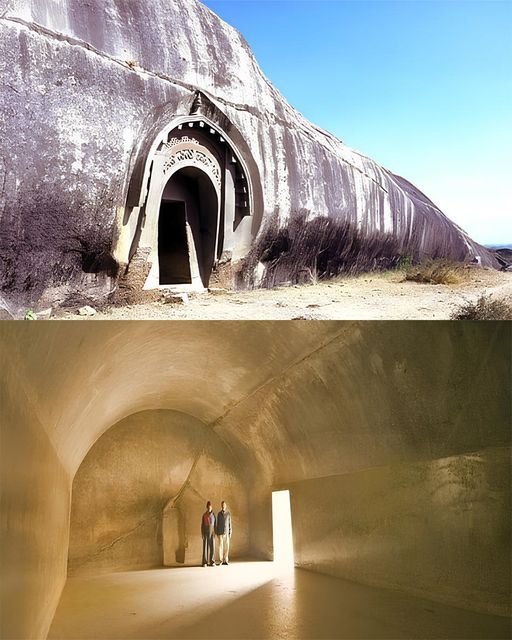The Barabar Caves, located in Bihar, India, are among the oldest rock-cut caves in the world. These structures, carved entirely out of granite, offer a glimpse into the artistry and spirituality of ancient India. Below, we explore their history, architecture, and enduring legacy.

1. The History of the Barabar Caves
1.1. Location and Overview
Situated about 40 km (25 miles) from Bodh Gaya, the Barabar Caves are nestled in the Barabar Hills of Bihar. This site primarily includes four caves: Karan Chaupar, Lomas Rishi, Sudama, and Visvakarma.
1.2. Connection to Emperor Ashoka
Historians believe these caves were commissioned during the reign of Emperor Ashoka of the Mauryan Empire in the 3rd century BCE. Additional caves in the nearby Nagarjuni Hills were built for later kings, as inscriptions reveal.
1.3. Religious Significance
Initially used by Ajivika ascetics, the caves later came to feature Buddhist and Hindu sculptures, showcasing their role as spiritual hubs for various religious traditions.

2. The Architecture of the Barabar Caves
2.1. Carved from Solid Granite
The caves are monolithic, carved entirely from granite. Their interiors feature two chambers with walls that are astonishingly smooth and polished, creating a mirror-like effect.
2.2. Unique Acoustics
One remarkable feature is the acoustics within the caves. The polished walls amplify sound, producing dramatic echoes that likely enhanced religious chants and ceremonies.
2.3. Intricate Details
The Lomas Rishi Cave is particularly famous for its ornate entrance, resembling a wooden hut. This design later inspired rock-cut architecture across the Indian subcontinent.

3. The Sudama Cave: A Closer Look
3.1. Dedicated by Ashoka
The Sudama Cave, located on the southern side of the Barabar Hills, was dedicated by Emperor Ashoka in 261 BCE. An inscription in Brahmi script refers to Ashoka as Priyadarsin, meaning “He who brings joy.”
3.2. Architectural Features
This cave consists of a vaulted circular chamber and a rectangular pillared hall. Its bow-shaped arches are a testament to advanced craftsmanship of the Mauryan period.
3.3. Polished Perfection
The interior walls are perfectly smooth and polished. This meticulous detailing not only enhances its visual appeal but also demonstrates the extraordinary effort involved in its creation.

4. The Legacy of the Barabar Caves
4.1. Influence on Indian Architecture
The Barabar Caves significantly influenced the tradition of rock-cut architecture in India, inspiring later creations like the Ajanta and Ellora caves.
4.2. A Testament to Craftsmanship
The precision with which these caves were carved highlights the advanced engineering and artistic skills of ancient India.
4.3. A Site of Enduring Mystery
Despite extensive studies, the purpose and techniques behind their construction continue to intrigue historians and archaeologists worldwide.
See more: The Magnificent Statue of Athena: A Symbol of Ancient Greek Art and Culture
Conclusion
The Barabar Caves are more than just ancient structures; they are a testament to the spiritual devotion, architectural ingenuity, and artistic mastery of their creators. As a cultural and historical treasure, they continue to inspire awe and curiosity, standing as a monument to the enduring legacy of India’s past.


CÁC TIN KHÁC
Mark Twain & Olivia Langdon: A 36-Year Love Story Filled with Laughter and Devotion
The Tollund Man: A 2,400-Year-Old Mystery Preserved in a Danish Bog
Skara Brae: Scotland’s Hidden Neolithic Village
Porta Nigra: The Hidden Depths of Trier’s Iconic Roman Gate